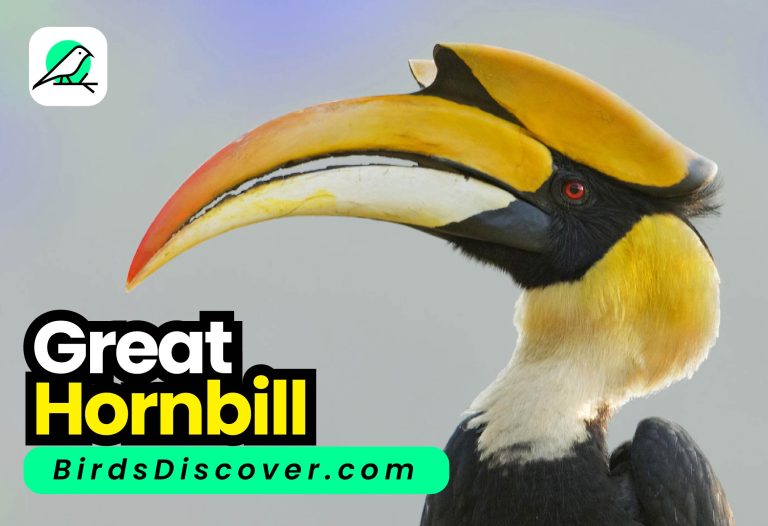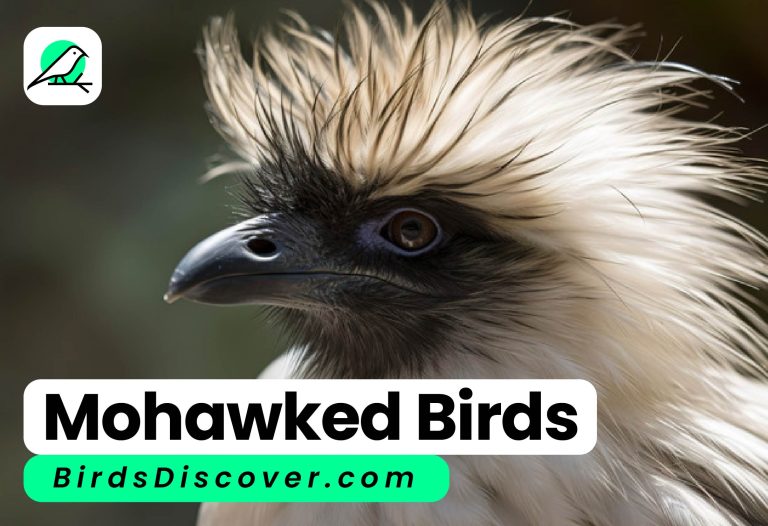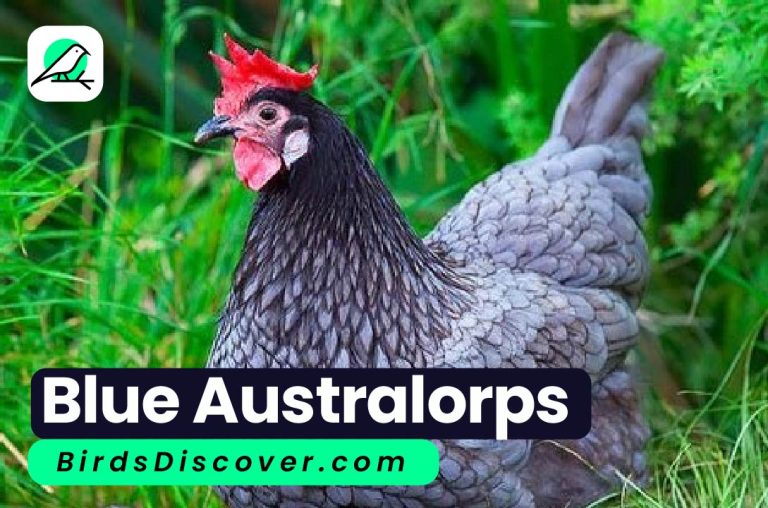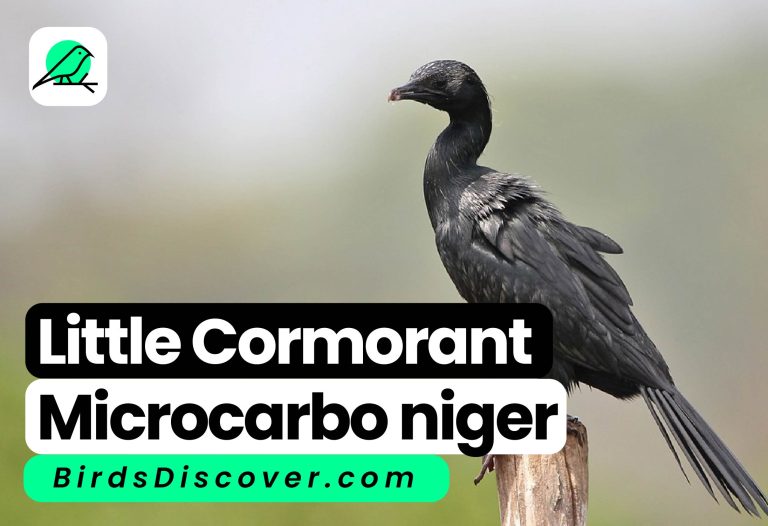African Openbill Stork: Insights into Its Species, Habitat, and Behavior
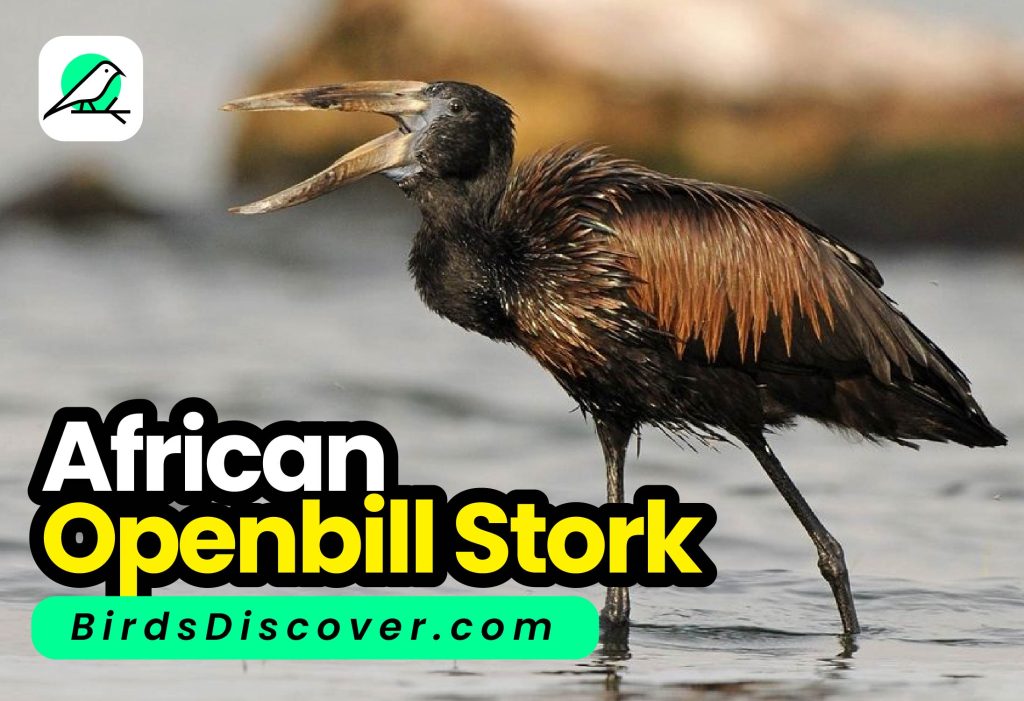
These storks thrive in shallow waters, where they can find abundant food sources in the mud and vegetation.
They exhibit strong social structures and are often seen interacting with each other, especially during feeding and nesting.
Conservation initiatives are important to protect their natural habitats and ensure their survival in the wild.
African Openbill Stork
African Openbill Stork (Anastomus lamelligerus) is a striking wading bird found predominantly in the wetlands and riverine areas of sub-Saharan Africa. Distinguished by its unique bill, which features a distinctive gap between the mandibles, this adaptation allows the bird to effectively feed on its primary diet of snails, which it extracts from their shells using the bill’s serrated edges. The African Openbill is characterized by its dark plumage, long legs, and slender neck, contributing to its elegant and distinctive appearance. It typically inhabits swamps, floodplains, and estuaries, where it forms large, noisy colonies. The bird’s habitat preferences and specialized feeding habits make it a crucial component of its ecosystem, helping to control snail populations and contributing to the ecological balance of its wetland environments.
Scientific Classification
| Category | Classification |
|---|---|
| Common Name | African Openbill |
| Scientific Name | Anastomus lamelligerus |
| Kingdom | Animalia |
| Phylum | Chordata |
| Class | Aves |
| Order | Ciconiiformes |
| Family | Ciconiidae |
| Genus | Anastomus |
| Species | Anastomus lamelligerus |
African Openbill Stork Sound
The African Openbill (Anastomus lamelligerus) produces a range of distinctive vocalizations that include harsh, resonant calls and clattering sounds. Its most notable call is a repetitive “kraak-kraak,” which is often heard during flight or when the bird is disturbed. These calls are used for communication within colonies, especially during the breeding season. The bird also makes clattering noises by snapping its bill, which can be heard when it is feeding or interacting with other openbills. The varied sounds play a crucial role in maintaining social cohesion and alerting others to potential threats or disturbances in their wetland habitat.
Summary
The African Openbill (Anastomus lamelligerus) is a notable wading bird native to the wetlands and riverine areas of sub-Saharan Africa. It is recognized for its distinctive bill, which features a unique gap between the mandibles, specifically adapted to extract and feed on snails. The bird’s dark plumage, long legs, and slender neck contribute to its elegant appearance. Preferring habitats such as swamps, floodplains, and estuaries, the African Openbill often forms large colonies and plays a vital role in controlling snail populations within its ecosystem. Its specialized feeding behavior and habitat preferences highlight its importance in maintaining the ecological balance of its wetland environments.

Size Guide of African Openbill
| Attribute | Measurement |
|---|---|
| Length | Approximately 65–75 cm (25.5–29.5 inches) |
| Wingspan | About 105–115 cm (41–45 inches) |
| Weight | Typically 1.5–2.5 kg (3.3–5.5 lbs) |
| Bill Length | Around 15–20 cm (6–8 inches) |
Description:
- Length: The African Openbill measures between 65 and 75 cm from head to tail, making it a medium-sized wader.
- Wingspan: Its wingspan ranges from 105 to 115 cm, allowing it to navigate through its wetland habitats with ease.
- Weight: The bird typically weighs between 1.5 and 2.5 kg, giving it a robust build suited for its wading lifestyle.
- Bill Length: The bill is notably long, measuring around 15 to 20 cm, with a distinctive gap that aids in its specialized feeding on snails.
These dimensions contribute to the African Openbill’s adaptation to its wetland environment, enhancing its ability to forage and navigate its habitat.
Flighting style
The African Openbill (Anastomus lamelligerus) exhibits a distinctive and graceful flight style well-suited to its wetland habitat. When in flight, it displays a slow, steady, and deliberate wingbeat with a somewhat shallow, broad wingspan. The bird’s flight is characterized by a series of slow, flapping beats followed by brief periods of gliding. This method allows the African Openbill to efficiently traverse large distances across its swampy or riverine environments. The bird’s long legs and neck are extended during flight, contributing to its streamlined appearance. Its flight style is both efficient for foraging and elegant, reflecting its adaptability to life in wetland areas.
Diet:
- Primary Food: Snails
- Specialized Bill: Uses its uniquely adapted bill with a gap to extract and pry open snail shells.
- Additional Invertebrates:
- Insects: Includes various small insects.
- Crustaceans: May consume small crustaceans found in its wetland habitat.
- Feeding Behavior:
- Foraging: Typically forages in shallow water, mudflats, and wetlands.
- Feeding Technique: Uses its bill to grip and manipulate prey, demonstrating specialized feeding adaptations.
- Ecological Role:
- Population Control: Helps control snail populations and contributes to maintaining ecological balance in wetland environments.
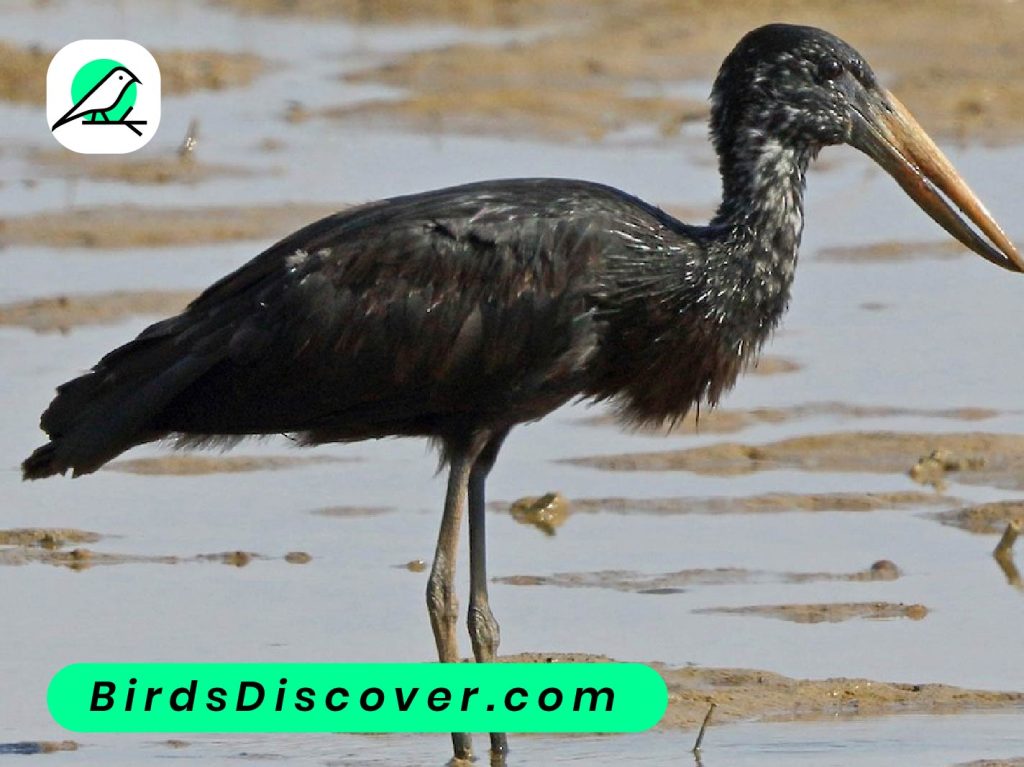
Habitat:
The African Openbill (Anastomus lamelligerus) is typically found in diverse wetland habitats across sub-Saharan Africa. Its preferred environments include:
- Swamps and Marshes: The bird thrives in swampy and marshy areas where water is abundant, providing ample feeding opportunities and suitable conditions for nesting.
- Floodplains: It inhabits floodplains, where seasonal flooding creates ideal conditions for foraging and breeding.
- Riverine Areas: The African Openbill is commonly seen along rivers and their surrounding wetlands, which offer rich food resources and a suitable habitat for its lifestyle.
- Estuaries: Coastal estuaries are also within its range, where brackish water and tidal zones support a variety of invertebrates and mollusks.
This wading bird is well-adapted to life in these wetland environments, which provide the necessary resources for its specialized diet and breeding habits. The availability of dense vegetation and shallow waters in these habitats supports the African Openbill’s feeding, nesting, and social behaviors.
Migration:
The African Openbill (Anastomus lamelligerus) is predominantly a sedentary species with limited migratory behavior. Unlike some bird species that undertake long-distance migrations, the African Openbill generally remains within its established range throughout the year.
Key Points About Migration:
- Sedentary Nature: The African Openbill typically does not migrate over long distances. Instead, it maintains a relatively stable range within sub-Saharan Africa.
- Local Movements: While it does not engage in extensive migrations, the bird may make local movements in response to seasonal changes, such as shifts in water levels or food availability. For example, during the dry season, the bird might move to areas with more abundant water and food sources.
- Habitat Flexibility: The species’ sedentary behavior is supported by its adaptability to various wetland environments. It can adjust its movements based on changes within its habitat, such as seasonal floods or droughts, rather than undertaking long migratory journeys.
Overall, the African Openbill’s migration is characterized by short-range, localized movements rather than long-distance migration, reflecting its reliance on stable wetland habitats within its range.

Threats to the African Openbill
The African Openbill (Anastomus lamelligerus) faces several threats that impact its population and habitat:
- Habitat Loss: Drainage of wetlands for agricultural development and urban expansion reduces the availability of suitable habitats, impacting the bird’s foraging and nesting sites.
- Water Pollution: Pollution from agricultural runoff, industrial activities, and domestic waste can degrade water quality in wetlands, affecting the health of the bird and its food sources.
- Climate Change: Changes in climate patterns can alter the hydrology of wetland areas, leading to changes in water levels and affecting the bird’s habitat and food availability.
- Human Disturbance: Increased human activity in wetland areas, including fishing and recreational activities, can disturb nesting sites and reduce the bird’s access to food.
Breeding of the African Openbill
The breeding behavior of the African Openbill is adapted to its wetland habitat:
- Nesting Sites: The African Openbill nests in colonies, often in tall trees near water or in reed beds. It prefers locations that offer some protection from predators and access to water for feeding.
- Nesting Structure: Nests are typically large and made from sticks and branches. The birds build their nests in the trees or reeds, creating a stable platform for laying eggs.
- Breeding Season: Breeding generally coincides with the wet season when water levels are high and food resources are abundant. This timing ensures that the young have access to sufficient food as they grow.
- Reproduction: The female typically lays 2 to 4 eggs per clutch. Both parents are involved in incubating the eggs and feeding the chicks once they hatch. The chicks are fed a diet of regurgitated food from the parents until they are old enough to forage independently.
- Parental Care: Both male and female African Openbills participate in rearing the young, with both sharing duties of incubating eggs and feeding the chicks.
Efforts to mitigate threats and conserve wetland habitats are crucial for maintaining healthy populations of the African Openbill and ensuring its continued survival.
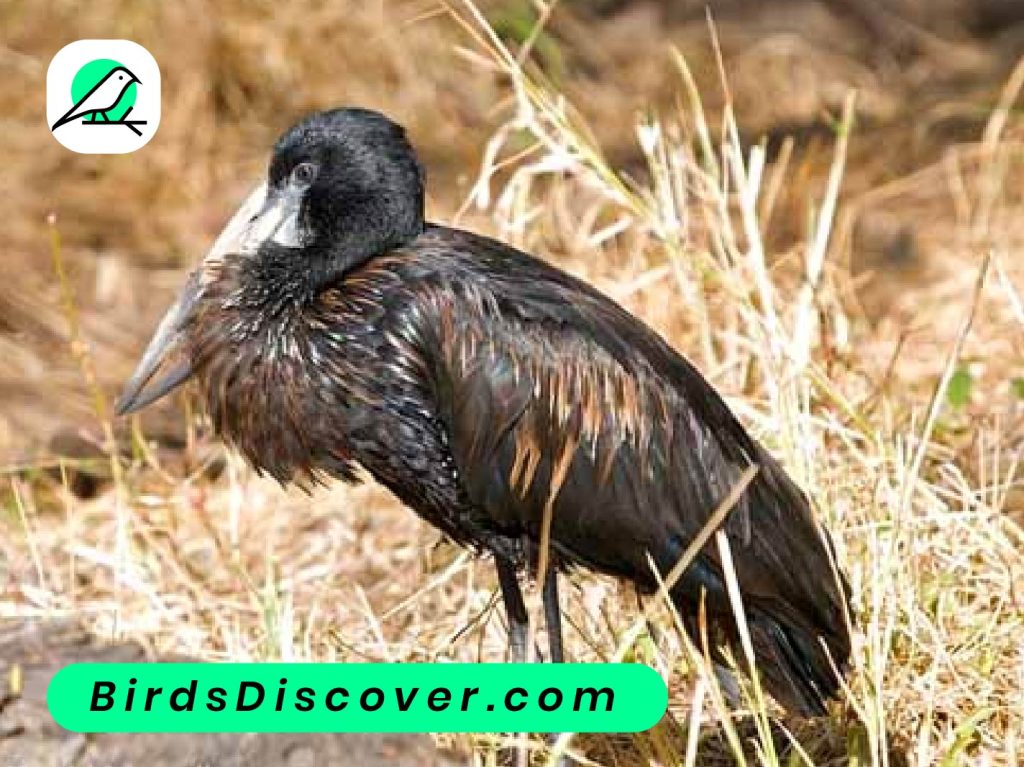
Common Names in Different Languages
| Language | Common Name |
|---|---|
| English | African Openbill |
| French | Bec-en-scie africain |
| Swahili | Kijiko cha maji |
| Zulu | Isihlanzi |
| Xhosa | Ityiwa |
| Amharic | አፍሪካን ኦፕንቢል (Afrikan Openbill) |
| Hausa | Tsuntsayen ruwa na Afirka |
| Shona | Hama yeMugwagwa |
| Sesotho | Tswane ea metsi |
| Yoruba | Ẹyẹ Ọmọ-òfè |
FAQS
1. What is the primary diet of the African Openbill?
Answer: The primary diet of the African Openbill consists of snails, which it extracts from their shells using its uniquely adapted bill. The bird also consumes other invertebrates such as insects and small crustaceans.
2. Where does the African Openbill live?
Answer: The African Openbill inhabits wetlands, riverine areas, swamps, marshes, and floodplains across sub-Saharan Africa. It prefers areas with abundant water and vegetation, which provide suitable feeding and nesting sites.
3. Does the African Openbill migrate?
Answer: No, the African Openbill is largely sedentary. It does not undertake long migrations but may make local movements in response to changes in water levels or food availability within its range.
4. How does the African Openbill build its nests?
Answer: The African Openbill builds large nests in trees or reed beds near water. The nests are constructed from sticks and branches, creating a stable platform for laying eggs. Both parents participate in nest building and care for the young.
5. What are the main threats to the African Openbill?
Answer: The main threats to the African Openbill include habitat loss due to wetland drainage and agricultural expansion, water pollution, climate change affecting wetland hydrology, and human disturbance in its natural habitat.


